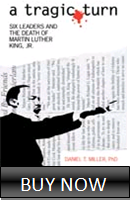
2020 has brought you confusion and dissension from the pandemic, the social unrest, and the ongoing political whirlwinds. The year has also brought to the forefront some of the features of change you might not have expected as we stand here in mid-summer. I wonder if any of these four features—four subtle clashes, if you will—are familiar to you in this moment.
First.
People want to get back to anything normal. In every aspect of their lives they are grabbing onto anything that resembles normalcy. But at work, in many organizations where they’re employed, the people in positions of authority have discovered the benefits of shocking change. They don’t want to go back to the old ways, to the old routines. In fact, the scale of shock has proven to be very useful in overcoming long-held resistance to new ways.
Normal as a healthy return to sanity. New, unimagined normal as a first step in the right direction. That’s a clash.
Second.
These leaders in the workplace want their employees and team members to remember how much they’ve proven they can do. They want to celebrate and embrace the scale and pace of change, likely hoping to re-invoke it as change continues to roll and unfold. At the same time, it’s normal for people experiencing traumatic events to seek to forget what’s happened, to put it behind them. They want the wounds to scar over, not to stay fresh from constant remembering, constant recalling, constant returning to the story and experience of the original event.
Let’s remember. Let’s forget. That’s a clash.
Third.
The current state of fact is that this crisis is likely long-term, especially for the pandemic. It will be around for quite a while. The people in the workplace, on the team, need to know that. Straight ahead is the long haul. Buckle up, buckle down. However, vision without hope is unsustainable, and for hope to be a resource it has to be reachable, tangible, at least touchable and visible in the form of improvement at least on the further edge of the short term. If hope is futile and can’t be realized, the present state of acceptance is nothing more than a surrender to a status quo, the abandonment of progress.
Reducing hope in order to elevate the realism of the long-term. Emphasizing hope to give us the fuel to get around the corner and make it through the short-term. That’s a clash.
Fourth.
Some of the best aspects of adapting in the pressure of change were done quickly, without much discussion or building of consensus, on the fly. Now, afterward, we’re going back to the ways we had assumed were correct all along and had always argued against…but which proved cumbersome and had to be abandoned in the crisis. And so we’re heading back to: taking longer (which we stopped temporarily to get things done), having more input (which wasn’t so important in the crisis when we had to get things done), and making sure people feel heard and included (which time didn’t allow for in the emergency so we could get things done).
One model of change. An opposite model of change. That’s a clash.
There are likely a hundred other clashes beyond these four. Regardless of the number, two threads run through them. They are occurring right now, and they require different responses from you as a leader.
I’m happy to talk with you about your leadership. Free. No clash.
Thanks for reading. All the best, Dan







